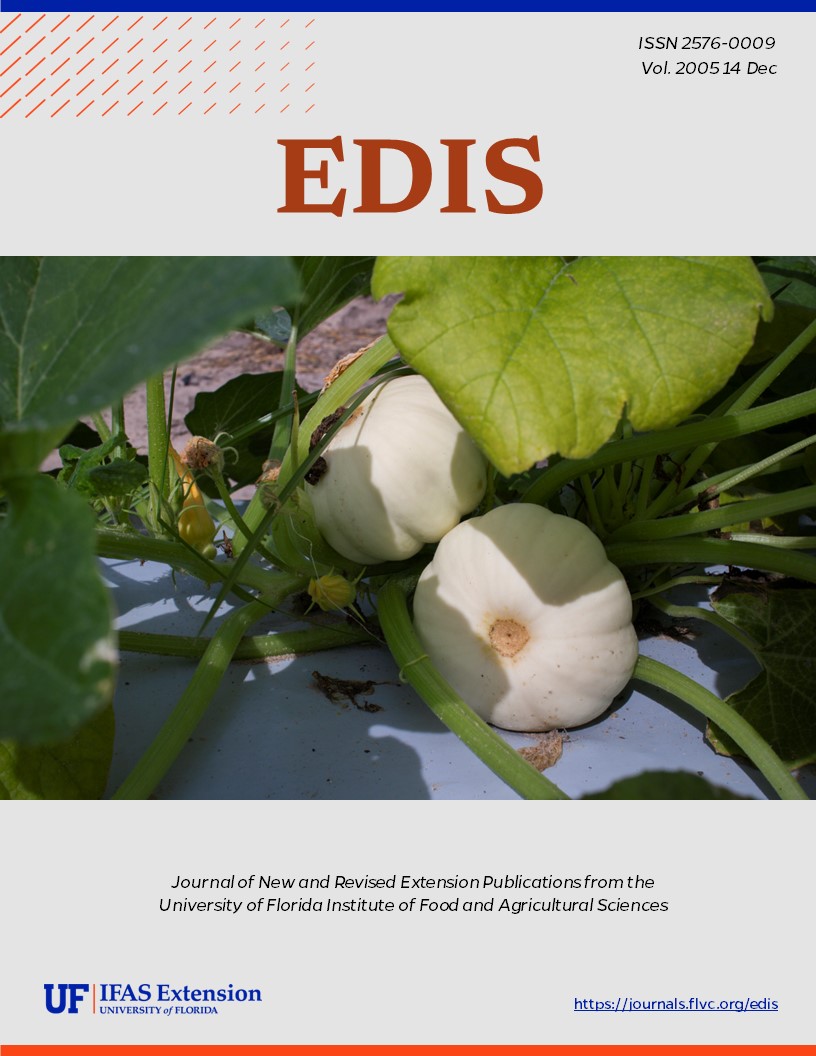Abstract
Crop insurance is one of the strategies producers can use to reduce risk of income loss due to climate variability. The best approach for reducing risks involves a combination of crop insurance with a pre-harvest marketing plan that includes strategies like hedging and forward contracting. A producer's choice among strategies is often complicated when both price and yield risk are present. However, about 69% of crop failures in the U.S. are because of either drought or excessive moisture (Ibarra and Hewitt, 1999). Are there options for a farmer to reduce these weather and climate-based risks, and can a grower take advantage of climate forecast information to decide about insurance levels? This paper explores this idea for peanuts and provides examples of how to use crop growth simulation models in combination with climate forecasts to decide about coverage levels. This document is CIR 1468, one of a series of the Agricultural and Biological Engineering Department, Florida Cooperative Extension Service, Institute of Food and Agricultural Sciences, University of Florida. First published July 2005. Reviewed: September 2008.
References
Ibarra, R. and T. Hewitt. 1999. Utilizing crop insurance to reduce production risk. Institute of Food and Agricultural Sciences (IFAS Publication FE-198). Florida Cooperative Extension Service, Gainesville, Florida.
Boote, K. J., J. W. Jones, G. Hoogenboom. 1998. Simulation of crop growth: CROPGRO Model. In: R. M. Peart and R. B. Curry (eds) Agricultural Systems Modeling and Simulation. Marcel Dekker, New York. Pp. 113-133.
Fraisse, C.W., D. Zierden, N. Breuer, J. Jackson, and C. Brown. 2004. Climate forecast and decision making in agriculture (IFAS Publcation ABE352). Florida Cooperative Extension Service, Gainesville, Florida. https://doi.org/10.32473/edis-ae267-2004
Jones, J.W., G. Hoogenboom, C.H. Porter, K.J. Boote, W.D. Batchelor, L.A. Hunt, P.W. Wilkens, U. Singh, A.J. Gijsman, and J.T. Ritchie. 2003. DSSAT Cropping System Model. European Journal of Agronomy 18:235-265. https://doi.org/10.1016/S1161-0301(02)00107-7
Hoogenboom G., J. W. Jones, and K. J. Boote. 1992. Modeling growth, development, and yield of grain legumes using SOYGRO, PNUTGRO, and BEANGRO: a review. Transactions of the ASAE 35:2043-2056. https://doi.org/10.13031/2013.28833
Hoogenboom, G., J.W. Jones, P.W. Wilkens, C.H. Porter, W.D. Batchelor, L.A. Hunt, K.J. Boote, U. Singh, O. Uryasev, W.T. Bowen, A.J. Gijsman, A. du Toit, J.W. White, and G.Y. Tsuji. 2004. Decision Support System for Agrotechnology Transfer Version 4.0 [CD-ROM]. University of Hawaii, Honolulu, HI.

